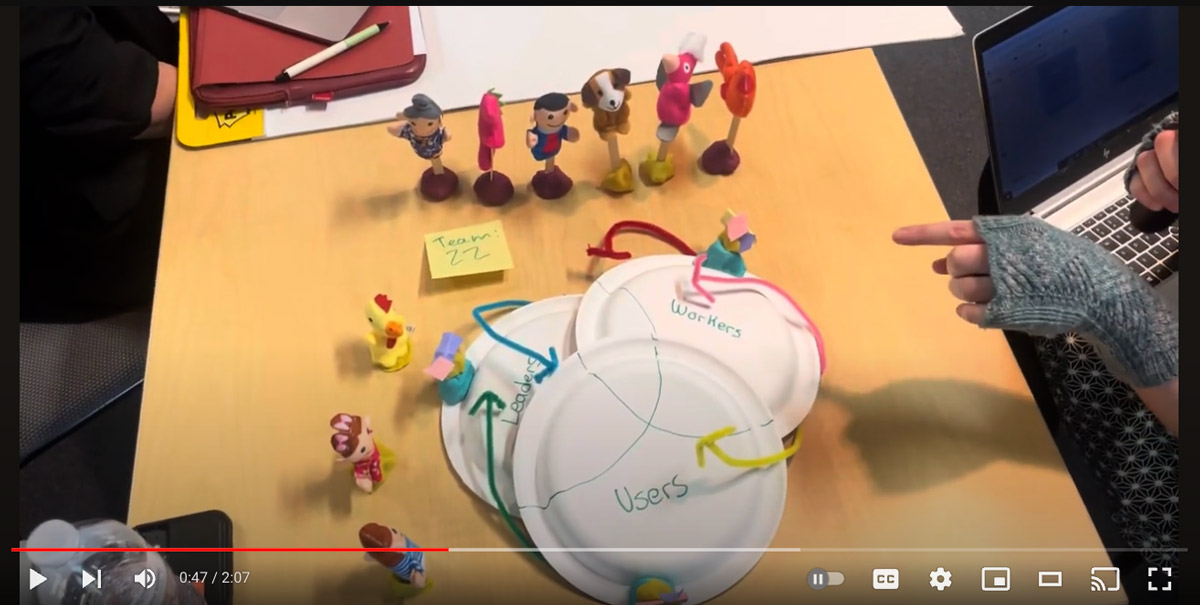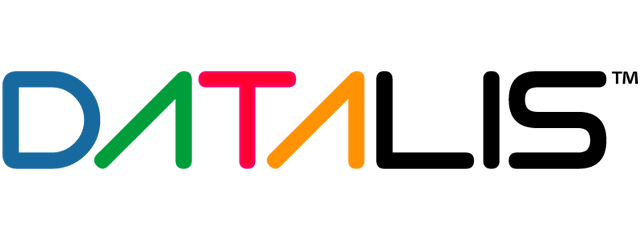Reimagining Leadership in Libraries: A Flexible Framework for Inclusive Communication
Team’s Creative Approach to Encouraging Diverse Leadership Styles and Continuous Improvement
In their presentation, the team explored innovative strategies for transforming traditional hierarchical leadership structures within library settings. Their vision challenges the conventional understanding of leadership, advocating for a more dynamic and inclusive approach that accommodates various communication styles and encourages engagement across different organizational levels.
How might we empower library workers to pursue skills that will enable better communication and decision-making at all levels of the library and foster a positive experience that reflects the needs of all stakeholders, including library leadership, workers, and users.
The core of the team’s prototype is a visual representation that emphasizes the flexibility and adaptability required in modern leadership roles. This approach acknowledges that effective leadership and communication are not one-size-fits-all but should be tailored to suit the diverse needs and situations encountered within library environments.
Key Components of the Prototype:
1. Diverse Communication Styles: The prototype illustrates the necessity of employing different communication styles, represented by arrows of various colors. This diversity acknowledges that interactions within a library can vary significantly, requiring leaders to adapt their communication methods to effectively reach and engage with their audience.
2. Acknowledgment of Overlooked Stakeholders: A critical aspect of the prototype is the recognition of individuals or groups who may have been inadvertently excluded from traditional leadership models. By identifying these overlooked stakeholders, the team highlights the importance of inclusive practices that ensure everyone’s voice is heard and valued.
3. Foundation for Future Research: The prototype includes an element that underscores the inevitability of gaps in current research and practices. It invites ongoing inquiry and development, suggesting that leadership models should continuously evolve to address previously unrecognized needs and perspectives.
4. Flexibility in Leadership Roles: A notable feature of the prototype is its depiction of leadership as a dynamic and changeable force within the organization. The concept of “sticky” leadership roles—easily adjusted or repositioned—suggests that leadership can and should be fluid, with responsibilities shifting as needed to respond to different contexts and challenges.

This team’s presentation brings a fresh perspective to leadership within the library sector, proposing a model that values flexibility, inclusivity, and continuous improvement. By challenging traditional hierarchical structures and advocating for adaptable communication styles, the prototype presents a pathway toward more responsive and effective leadership. This approach not only enhances the internal dynamics of library organizations but also ensures that they are better equipped to meet the diverse needs of the communities they serve. Through their creative visualization, the team encourages a reevaluation of leadership roles in libraries, promoting a culture of ongoing learning, adaptation, and inclusiveness.
Team 22 Members
Thanks to these project team members for their collaboration with DATALIS and their contributions towards innovating professional development.
• HyunSeung Koh
• Oscar Gittemeier
• Mara Sedlins
Evaluate This Project
Please review the story and answer the five questions based on your knowledge, experience, and perspective. Your feedback will help us to innovate professional education that impacts recruitment, growth, and retention.
Implementation Roadmap
Phase 1: Assessment and Planning
- Evaluate Current Leadership and Communication Structures
- Action: Conduct a comprehensive assessment of existing leadership models and communication practices within the library.
- Steps:
- Gather data through surveys, interviews, and focus groups involving staff at all levels.
- Identify strengths, weaknesses, and areas lacking inclusivity or flexibility.
- Define Inclusive Leadership Competencies
- Action: Establish a set of competencies that promote flexible and inclusive leadership.
- Steps:
- Collaborate with stakeholders to determine key skills and behaviors.
- Align competencies with the library’s mission and values.
Phase 2: Training and Development
- Develop Training Programs
- Action: Create training modules focused on adaptive communication, decision-making, and leadership flexibility.
- Steps:
- Design workshops and e-learning courses that cater to various learning styles.
- Incorporate scenarios that reflect diverse communication needs and leadership challenges.
- Implement Mentorship Opportunities
- Action: Establish mentorship programs pairing experienced leaders with emerging leaders to foster knowledge exchange.
- Steps:
- Define mentorship goals and expectations.
- Facilitate regular meetings and provide resources to support mentor-mentee relationships.
Phase 3: Inclusive Engagement
- Identify and Engage Overlooked Stakeholders
- Action: Recognize and involve individuals or groups previously excluded from leadership discussions.
- Steps:
- Map out all potential stakeholders within the library community.
- Create platforms for these stakeholders to voice their perspectives and contribute to decision-making.
- Promote Diverse Communication Strategies
- Action: Encourage the use of various communication methods to cater to different preferences and needs.
- Steps:
- Train staff on multiple communication styles and tools.
- Implement policies that support flexible communication approaches.
Phase 4: Continuous Improvement
- Establish Feedback Mechanisms
- Action: Create systems to regularly collect feedback on leadership and communication practices.
- Steps:
- Deploy anonymous surveys and suggestion boxes.
- Hold open forums for discussion and feedback sharing.
- Iterate and Evolve Leadership Practices
- Action: Regularly review feedback and industry best practices to refine leadership models.
- Steps:
- Set up a committee to analyze feedback and recommend changes.
- Implement adjustments and communicate updates to all staff.
Summary
To implement Team 11’s vision for flexible and inclusive leadership in libraries, institutions should assess current practices, define inclusive competencies, and develop targeted training programs. Engaging overlooked stakeholders and promoting diverse communication strategies are crucial steps. Establishing continuous feedback mechanisms will ensure ongoing improvement and adaptability in leadership roles, fostering a more dynamic and responsive library environment.
